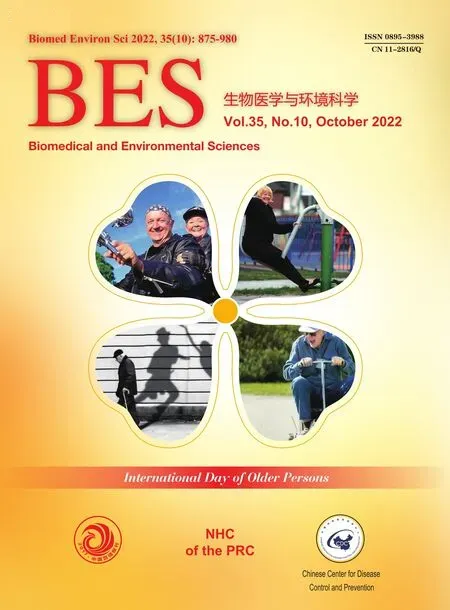Standard of Recommendation for Weight Gain during Pregnancy Period*
2022-12-24Preface
Preface
1 Scope
This standard specifies the recommended value of weight gain of natural singleton pregnancy in China.
This standard is applicable to guide weight gain in Chinese women.
This standard is not apply to women with height below 140 cm or weight higher than 125 kg before pregnancy.Patients with comorbidities and complications during pregnancy should be evaluated individually in combination with clinical opinions.
2 Normative references
There are no normative references available in this standard.
3 Terms and definitions
The following terms and definitions apply to this standard.
3.1 Pregnancy period
It is approximately 280 days (40 weeks) from the first day of the last menstrual period.
Note: The whole course of pregnancy is clinically divided into three periods: first trimester, second trimester and third trimester.
3.2 First trimester
First trimester is the first 13 weeks long of a pregnancy (< 14 weeks).
3.3 Second trimester
Second trimester includes weeks 14 through 27 of a pregnancy (27+6weeks).
3.4 Third trimester
Third trimester includes weeks 28 through 40 of a pregnancy.
3.5 Body mass index; BMI
An index of body weight is calculated as the ratio of body weight (kg) to the square of body height (m).
3.6 Pre-pregnancy weight
Mean body weight during the three months before pregnancy.
3.7 Pre-delivery weight
The last weight weighed in the week before delivery.
3.8 Gestational weight gain, GWG
GWG refers to pre-delivery weight (kg) minus pre-pregnancy weight (kg).
3.9 Gestational weight gain in first trimester
Weight at the end of the 13th week of gestation (kg) was calculated by subtracting pre-gestation weight(kg).
3.10 Gestational weight gain in second trimester
Weight at 27 weeks of gestation (kg) was subtracted from weight at 13 weeks of gestation (kg).
3.11 Gestational weight gain in third trimester
Weight before delivery (kg) was subtracted weight at 27 weeks of gestation (kg).
4 The range of weight gain and the recommended weekly weight gain in the second and third trimester of pregnancy
According to the cut point of Chinese BMI, the recommended range of weight gain and weekly weight gain of the second and third pregnancy pregnant women under different pre-pregnancy BMI was given respectively,as shown in Table 1.
5 Measurement methods
The height and weight of pregnant women are measured in Appendix A.
Appendix A
Measurement of height and weight of pregnant women
A.1 Height measurement
A.1.1 Measurement conditions
Pregnant women should be bareheaded, barefoot, and untie the braid, with room temperature of about 25 °C.
A.1.2 Measurement tool
Stadiometer (height meter, accuracy of 0.1 cm) with wall offset device is used.The slide plate should be perpendicular to the beam and slide freely.
A.1.3 Measurement method
Pregnant woman stands up straight on the pedal, inhale deeply and hold breath, natural arms drooping,heels close, and toes about 60 degrees apart.The knees are straight together, the eyes are straight ahead, and the lower edge of the orbit remains at the same level as the upper edge of the auricle.Three points between the heel, hip and the two shoulder blades contact the vertical beam at the same time, keeping the head upright.The measuring person move the headpiece gently down until it is in contact with the head vertex,when the value is read after observing the pregnant woman’s correct posture.
A.1.4 Reading numbers and records
When reading, the eyes of the meter are on the same horizontal surface as the bottom surface of the slide measuring plate.Read the value shown by the column corresponding to the bottom surface of the slide measuring plate, which is accurate to 0.1 cm.
A.2 Body weight measurement
A.2.1 Measurement conditions
The measurement should be carried out in the morning, empty stomach and excretion, at room temperature of about 25 °C.A.2.2 Measurement tool
A calibrated electronic scale with a score of 0.1 kg was stable and zero during measurement.
A.2.3 Measurement method
Pregnant women are calmly standing in the middle of the scale pedal, even weight on both legs,bareheaded and barefoot, wearing thin underwear and paying attention to safety.
A.2.4 Reading numbers and records
The scale readings were accurately recorded, accurate to 0.1 kg.
杂志排行
Biomedical and Environmental Sciences的其它文章
- Noncommunicable Disease Mortality with Population Aging in Eastern, Central, and Western Regions of China: Current Status and Projection to 2030*
- Knowledge and Use of Personal Protective Measures for Mitigating Acute Respiratory lnfections in Children 6–16 Years of Age in Rural Communities of Macheng City, Hubei, China*
- Association and Prediction of Influenza-like Illness with Meteorological Factors in Mississippi, USA
- Survival Analysis of COVID-19 Patients Based on Different Levels of D-dimer and Coagulation Factors
- The lmpact of the COVlD-19 Pandemic on Urban Litter*
- Spatiotemporal Distribution and Epidemiological Characteristics of Hospital Admissions for Carbon Monoxide Poisoning in Guangdong, China, 2013–2020*
